
NEWTON PARK HORTICULTURAL SOCIETY


© Newton Park Horticultural society. All rights reserved. Privacy Policy | Contact
Types Of Slugs
Slug, the very word has the ability to make gardeners faces twist and contort in ways they shouldn’t. Types of slugs in the garden are varied but this one gastropod mollusc has brought men and women to tears after totally devastating their gardens. Whether that is fruits and veg such as brassicas. Or even your stunning ornamental plants like hostas. They are all favourites of these animals.
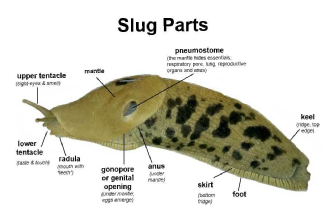
The anatomy of slugs can be broken down into various components.
Foot. This is the bottom of the slug. It is a muscle that the slug uses to move and this muscle contracts rhythmically to produce motion. As it moves the slug leaves behind a mucus layer which it slides upon. This protects the slug from objects it is climbing over. It is often the very reason why the eggshell slug deterrent that most gardeners use, just don’t work.
Tentacles Slugs have two pairs of tentacles on their heads. They can both be retracted if the slug is under threat. The upper pair is light sensing and the lower pair is what they use to smell.
slug_parts
Mantle Just behind the head is the mantle. A raised section of the back and looks like a saddle on a horse. This mantle contains the respiratory opening usually on the right side of the slug and is very easy to identify when opened. Below the mantle sits the anus and genitals.
Radula Used by molluscs for feeding it is a structure of tiny teeth used for scraping food particles off a surface and drawing them into the mouth.
Skirt This is the bottom fringe that surround the foot
Tail Everything to the rear of the mantle is called the tail.
Obviously, this is just a very basic breakdown of the slug’s anatomy, but it will help you understand sections of this blog as we continue
Types of Slugs
There are many different species and sub species of slugs. There are around 60,000 different species. That is way too many to cover here. In this section I will cover some of the most seen species in your garden at home.
Leopard Slug – Limax maximus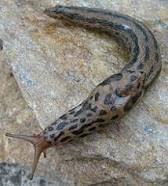
The Latin name Limas Maximus simply means the biggest slug. There are a few species in the genus such as the leopard slug and the great grey slug. This slug is part of the family Limacidae.
Leopard slugs can reach lengths of 16cm or 6.3 inches. With markings on its upper body vindictive of a leopard which is where it gains its common name from. The underside of this slug’s foot is white in colour.
leopard-slug
This slug has a long keel running the length of the rear of the body (Tail section). The mucus from this slug is sticky and you can see the very distinct breeding behavior while hanging from this mucus.
Where are leopard slugs found?
Being very widespread you can find them worldwide. They prefer to live in most woodland and gardens throughout the Europe, Asia, Africa and USA.
Are leopard slugs good?
Yes, they are good and are a gardener’s friend. This is a slug you don’t mind seeing in your garden as they do not feed on healthy living plant matter. They help the gardener to recycle and break down rotting matter which turns it into nutrients for the garden.
What do leopard slugs eat?
Leopard slugs can actually be a gardener’s friend. They typically eat rotting plants and fungi but are not averse to eating other slugs.
How long do leopard slugs live?
Unlike a lot of other slugs, leopard slugs if they survive the first winter can live up until they are two and a half years old.
Black Slugs – Arion ater
A common widespread slug with a large bulky body. This slug can reach lengths of 18cm or 7 inches and despite its name can be black, brown, grey, orange or even reddish in colour. It has large tubercles over the back and sides of its body.
Where Do Black Slugs Live?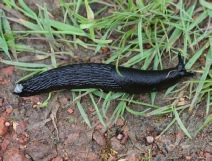
A very common slug, it is found is Europe, Northwest of USA, Alaska, Spain and Australia. This slug has also been introduced to various places such as British Columbia. They live in grassland, hedgerows and woodlands.
black-slug
Are black slugs harmful?
Slugs can be a total pain to the gardener. They are slimy and sticky when handled but the black slug is not harmful to humans.
Are black slugs poisonous to dogs?
Slugs carry parasite, one of these parasites is called lungworms, these are a serious issue if your dog should eat a slug. Lungworm has serious health issues for dogs such as :-
Breathing issues
General sickness
Poor blood clotting
Changes in behavior
If you see any of these signs of lungworm and you think your dog may have eaten any slug. You should pay a visit to your vet to be tested and treated, before it gets worse.
Ashy Grey Slug – Limax cinereoniger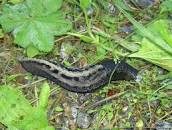
This is the largest UK slug. It can get to the enormous length of 25 cm or 11 inches. This slug has a pale-yellow keel running down its back with an ash-grey colour. Most gardeners won’t see this slug though as although it lives right across the UK it mainly stays to mature woodlands. This slug will not be an issue for the crops in your garden.
Dusky Slug – Arion subfuscus
When mature this slug has a moderate size of 7cm and can be found all over the UK. It is pale brown in colour with dark stripes but due to its mucus could be mistaken for being more orange in colour. It prefers to live in woodlands and hedgerows but can be found in gardens and allotments. This slug can be seen filling itself on your lettuce and brassicas.
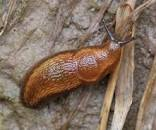
Netted / Grey Field Slug – Deroceras reticulatum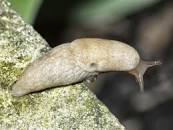
This is one of the most serious threats to most gardeners, It is widespread throughout the UK and lives in gardens and allotments. It will feed on the seeds you have planted as well as all vegetation that you plant out. The colour of this slug varies but usually light brown with dark blotches
It has a lumpy look across the body and its keel is very pronounced. The clear mucus is produced in extremely large quantities. Although small, just 3 to 5cm this slug will continue to feed even in freezing temperatures, so it is active during early spring.
Yellow Slug – Limax flavus 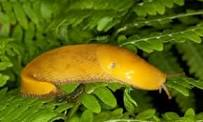
This slug certainly lives up to its name. It is yellow in colour and loves to live in damp areas. Whether that is the garden or your house. It is considered a pest species; however, this slug is also a great recycler of rotten matter.
It has yellow and grey mottled skin and approximately 10cm in length. It can be found all year round and eats decaying plants, fungi and also live plants. So, this slug is also one to watch for the gardener.
yellow-slug
These are some of the most popular slugs you may see around your garden.
So, what can we do about them? Are they good or bad? What’s their lifespans? These are all questions I asked myself over the years. It is important to understand what each slug’s benefits and challenges are in order to tackle the issues
Are there any good slugs?
Birds, insects, slowworms, earthworms and hedgehogs will all eat slugs. Our gardens are a balancing act, if you irradiate any of these you tip the balance. So, slugs in the garden are a good thing. They can help to break down decaying matter and will even eat cat and dog excrement and carrion.
Can a slug bite you?
Slugs cannot bite you, although they are not the most pleasant of looking creatures, they pose no harm to gardeners whatsoever. The radula is more like a tounge or ribbon of very minute teeth, they are unable to break the skin of us humans. However, they are used to great effect for grazing on your crops or mushrooms and decaying matter. Some even are idea for eating meat.
What is the lifespan of a slug?
Slugs will start to mature between the ages of 3 months and a year old. The average age for a slug’s life expectancy is 18 months, however slugs like the leopard slug can live up to 2.5 years.
Do slugs lay eggs?
Gardeners from time to time will move a rock or some ground cover and see little bundles of white to grey pearl like eggs, these are slug eggs. Usually laid of leaves or the soil. They are laid all year round and start feeding as soon as they hatch which usually takes around a month. The young slugs will feed for 3 to 5 months before maturity.
How to get rid of slugs?
There are so many slug control methods. Some work and others are just myths. Build a pond. This will attract in all sorts of wildlife that will eat the slugs. Things like birds, hedgehogs, frogs, toads, newts, and many other wildlife that will help you control the numbers.
Beer traps. This is a fantastic way in which to bring down the numbers in specific areas of the garden. One tip here is to add a ridge tile of your trap to keep the rain out.
Products like Nemaslug contain microscopic worms (Nematodes) which seek out slugs and stop them feeding on your plants within 3 days and then kills them. They are totally harmless to any wildlife and pets that may end up eating the slug after. Gardeners are always worried about the word nematode as they think they are all bad news. But this is a good one.
Placing down some boards, stones or plastic can provide areas for slugs to hide during the day. This will keep them cool in the shade and moist. It is simple for gardeners to collect the slugs from the areas during the day.
Hunting. Simply spend an hour each night after dark with a torch and a pair of scissors and simply go on a slug hunting spree.
Do slugs feel pain?
Having a mucus membrane slugs would feel pain. It is important to dispatch them as quickly as possible. Beer traps and some of the other ways are quick and effective. However, a favourite of gardeners is to pour salt on the slugs.
Imagine pouring salt up your nose, the mucus membrane would start to burn. Salt would have the same effect on a slug. It is dehydrating the slug, burning its membrane and it can take a long time to die. It would feel pain for the entire time until death.
As a gardener even if you didn’t care about slugs, there is another reason not to use salt. Adding lots of salt to your soil can not only kill the slug, but also loads of other soil life that is beneficial and even alter the ph. of your soils if used regularly.
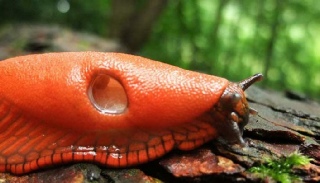
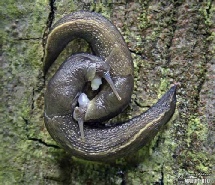
| Sowing Guide |